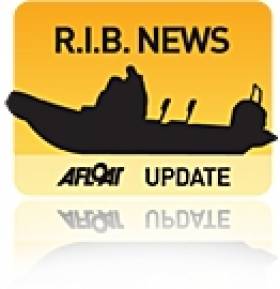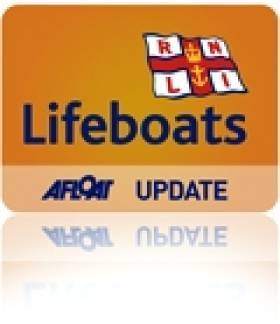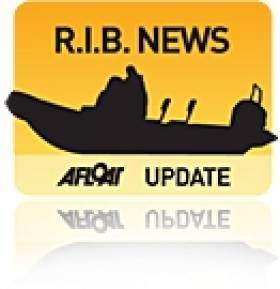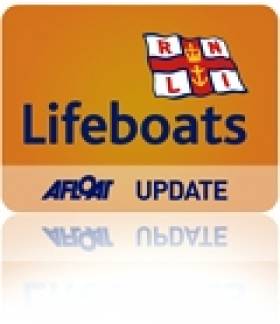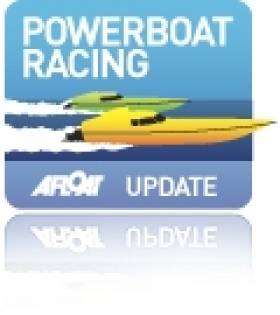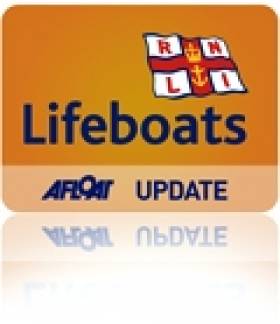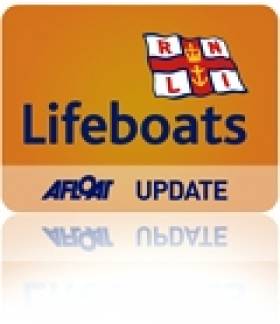Displaying items by tag: Speedboat
#KillCord - An official report into the tragic speedboat accident in Cornwall earlier this month that killed a father and daughter says that the driver was not attached to the boat's 'kill cord'.
As previously reported on Afloat.ie, BSkyB executive Nick Milligan and his eight-year-old daughter Emily were struck by the family's runaway RIB after being thrown overboard from the vessel on the afternoon of Sunday 5 May.
Four other family members were struck by the runaway boat as it circled in the water off Padstow. Nick's wife Victoria and four-year-old son Kit are recovering after sustaining "life-changing" leg injuries.
Police were reportedly investigating the role played in the incident by the boat's kill cord or safety lanyard, a device attached to the throttle that should automatically cut engine power if the driver is thrown from the vessel.
Now The Guardian reports the Marine Accident Investigation Branch's (MAIB) conclusion that the 8m Cobra RIB was fitted with a kill cord, but it was not attached to the driver.
It has not yet been determined who was driving the speedboat at the time of the accident, nor is it clear how the family was thrown from the vessel.
The report added: "The kill cord serves only one purpose, to stop the engine when the driver moves away from the controls.
"To ensure that this tragic accident is not repeated it is essential that all owners and operators of vessels ensure they are fitted with kill cords."
#RNLI - Dun Laoghaire RNLI was involved in the recovery yesterday afternoon of a sinking boat following the rescue of three people after the vessel began to sink off the Wicklow coast.
Three people were pulled from the water when their small boat got into difficulty off Bray on Sunday 12 May.
A local boat responded to the Mayday alert and brought the casualties to safety.
The RNLI lifeboat from Dun Laoghaire and the Greystones Coast Guard boat took the boat that was almost fully submersed under tow to shore.
Winds gusted to storm force towards the end of the operation but conditions were otherwise fresh, with only choppy waves off the coast.
The incident occurred shortly after midday when the 15ft speedboat was almost one mile from Bray Harbour.
Police Focus On Kill Cord In Cornwall RIB Tragedy
#KillCord - Police in Cornwall investigating the deaths of a father and daughter in a speedboat accident off Padstow at the weekend are focusing on the boat's 'kill cord', according to BBC News.
BSkyB executive Nick Milligan and his eight-year-old daughter were struck by the family's runaway Cobra RIB after losing control of the vessel and being thrown overboard.
Four other family members in the water struck by the 8m-long boat were hospitalised, with the BBC reporting that Milligan's wife Victoria and four-year-old son Kit suffered "serious, potentially life-changing injuries".
Witnesses describe the speedboat circling to hit the family after turning sharply and throwing them into the water, then continuing to run around in circles before it was stopped by local waterskiing instructor Charlie Toogood who jumped on board.
Investigators are looking closely at the kill cord or safety lanyard, a device attached to a boat's throttle that should automatically cut engine power if the boat's pilot goes overboard.
A malfunctioning kill cord was identified in an incident in Cork Harbour last summer in which a RIB pilot lost an arm after he was thrown overboard and subsequently struck by his runaway vessel, as previously reported on Afloat.ie.
Months before, an angler died and another was treated for hypothermia after being thrown overboard and separated from their vessel, a result of neither man using the kill cord on their boat's engine.
Speedboat on Rocks Leads to Lough Derg Lifeboat Rescue
#lifeboat – At 17.40hrs this evening Valentia Coast Guard requested Lough Derg Lifeboat to launch to assist three people on board their 18ft speedboat, after they lost steerage and were pushed on to rocks by the entrance to the Scarriff River in Scarriff Bay, at the south western end of Lough Derg.
The lifeboat launched at 17.50hrs with Helm Ger Egan, David Moore and Tom Dunne on board. Winds were south westerly, Force 6, gusting 7. The lifeboat was alongside at 18.13hrs. The three people on board were calm, safe and unharmed. An RNLI crew member was transferred to their boat to assess for damage. When it was established that the vessel was not holed, it was taken off the rocks and towed out into safe water. The lifeboat then towed the boat with her crew, and an RNLI volunteer still on board, back up the Scarriff River to her berth.
Lough Derg RNLI Helm Ger Egan, said that before going afloat at the beginning of the season, boat users should 'check that their boat is in full working order and also consider the weather forecast'.
The Lifeboat returned to station and was ready for service again at 19.10hrs.
Powerboat Hits Large Wake and Spins Out of Control
#boataccident – Clearly aware of the camera's presence, a day out on the water turned to tragedy in a horrific boating crash on Lake of the Ozarks in Missouri in the United States last week for one American family. All seven boaters were injured in the incident, according to LakeTV.
The footage shows the passengers being thrown back-and-forth like rag dolls after the family's powerboat plows into a large wake at high speed.
Five were taken to a nearby hospital to be treated for minor to moderate injuries.
#lifeboat – Last night at 21.19hrs, Lough Derg RNLI lifeboat was launched to investigate a vessel upturned in Youghal Bay, close to Garrykennedy. At 21.34hrs, the lifeboat launched with Helm Peter Clarke, Colin Knight and David Moore on board. Winds were southwesterly, Force 2, and visibility was good, but failing quickly with nightfall.
At 21.50 the lifeboat was alongside the upturned vessel, a 20ft speedboat. It was reported to have extensive damage to the outdrive and propellers, consistent with damage whilst underway. The lifeboat began a search of the area. Meanwhile the Killaloe Coast Guard unit launched from their base and the Irish Coast Guard Search and Rescue Helicopter took off from their base at Shannon to assist in the search.
Lifeboat crew, committee members and volunteers set off in teams to search the shoreline. There were no reports of anyone overdue, and attempts are ongoing to discover who might own the boat.
An extensive search of the water and shoreline didn't reveal anything. The speedboat was taken to Garrykennedy and is being investigated by Garda specialists.
The search was called off and all teams returned to their bases. A search is underway this again this morning.
The Lifeboat returned to station and was ready for service again 01.00hrs.
Lifeboat Operations Manager, Charles Stanley Smith thanked everyone for their assistance on the search saying that he was 'extremely pleased with the level of co-operation by all of the emergency services on the lake, as well as offers of help from the public'.
Dun Laoghaire Lifeboat Rescues Four as Speedboat Hits Rocks
Four people were rescued by the Dun Laoghaire RNLI lifeboat earlier today when their small powerboat hit rocks off Killiney Beach in south county Dublin. Nobody was injured in the incident that occurred shortly after 11am while the two men and two women were enjoying a pleasure outing.
The 22-foot open powerboat hit the submerged rocks two hours after low-tide and the collision caused damage to the engine. The crew contacted the Irish Coastguard who alerted the RNLI at Dun Laoghaire and the all-weather lifeboat (ALB) launched within ten minutes.
The casualty vessel dropped anchor close to the rocks to avoid being driven onto the beach by the fresh breeze and flood tide. On arrival, the ALB launched its daughter boat with two crew that passed a tow-line to the casualty that was then brought to Dun Laoghaire.
"Before taking a boat-trip, its important to check for local knowledge that will help avoid significant hazards," commented Stephen Wynne, Lifeboat Operations Manager at Dun Laoghaire. "The four people rescued were all wearing life-jackets and followed the correct procedure in calling for assistance."
Police Investigate Carlingford Boating Accident as Boy (6) Remains Critically Ill
It is understood another speedboat hit the youngster, leaving him with serious head injuries.
In a statement released on behalf of the Wilson family, Reverend David Somerville said:
"The family of Stuart Wilson, aged six years old, say that he remains critically ill. They would like to thank people for their support and prayers but appeal for privacy at this difficult time. They ask everyone to continue to pray for Stuart."
Stuart was given first aid on Cranfield Beach by a doctor and an off-duty nurse before being rushed to Daisy Hill hospital in Newry by ambulance.


























